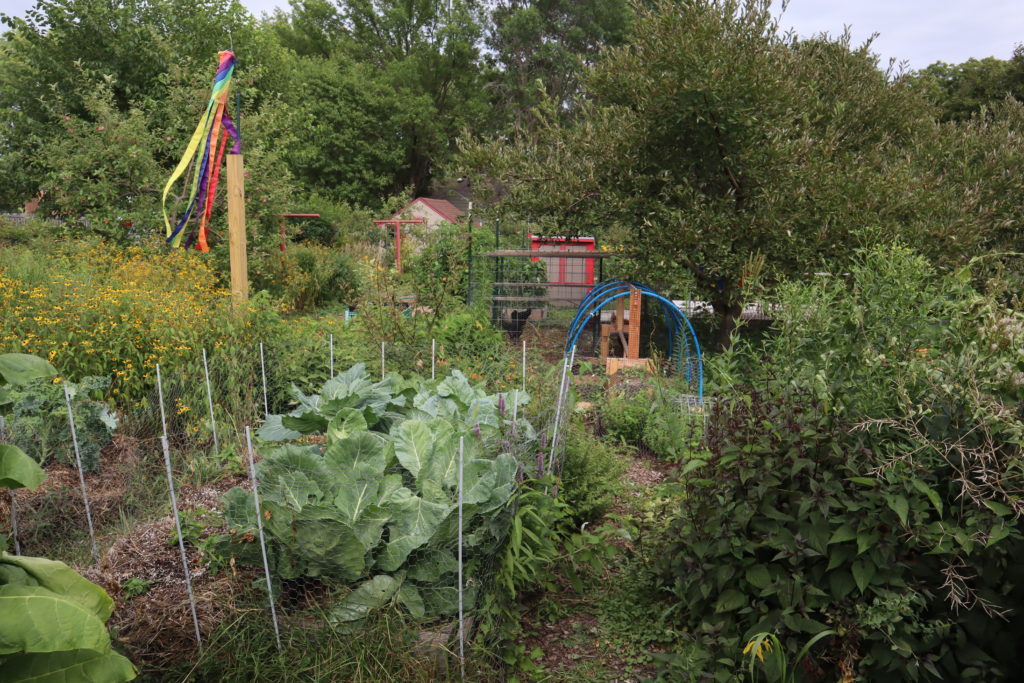For a long time, I have wanted to produce a video or videos about my urban farm here in Ames. Then Kayley Lain of the City of Ames electrical department asked a few weeks ago if I would do a “lightning talk” along with other presenters for its March 2, 2021 echo chat. I was eager to be part of the program, but when I found out more about the “lightening talk” concept, I realized the style was not a good fit for me. Kayley agreed to my suggestion that, instead, I could produce a seven-minute video for my share of the program. I was grateful to have a deadline and be limited to the short length, knowing that the process would generate creativity and ideas that I could build on later, either extending the program or making new ones. The video, titled Growing a Rural Homeplace on Urban Land, will soon be available via this site. Please check back occasionally for an updated report on the status of the video. Thanks.
After completing the video, I decided I should prepare a list of supplemental information that guests at the eco chat could download. Then I decided it would appropriate to include the list in this “thoughts” section of my web site.
printer-friendly text only version
I could also prepare a list of advice for people who wish to document their lives or a specific project in a way that would be helpful in the future when writing a book or producing a video. My advice on that topic could be long and detailed. In short, I would recommend that interested parties to be keeping notes, writing journal entries, taking photos, shooting video footage, and keeping these materials dated and otherwise well organized. Further advice is far beyond the scope of this page.
Now is indeed the time to shift from winter desk work such as video editing to getting out and about the urban farm to access the state of the farm and begin doing chores. First, though, I need to start my pepper seeds. And second, I want to wait until the weather warms and there is less wet snow on the ground. I have, however, begun to harvest scion wood from my apple trees so that I can graft baby apple trees in April.

I. Advice for a beginning gardener:
- Proceed inch-by-inch, and slowly grow your garden.
- Avoid taking on too much, becoming overwhelmed, and ending up hating even the thought of gardening.
- Place your garden in an area such as near your front or back door where you can observe and tend to your plants as you pass by them each day as part of your routine. In other words, it is possible to grow a garden in other places, but if further from your house, the work and joy of harvest can become out-of-sight-out-of-mind, creating problems.
- Research whether your topsoil and ground drainage are good for growing food or if, and how, you could improve the soil. Some residential sub-divisions, especially newer ones, have hardly any topsoil.
- Share tools, seeds, seedlings, labor, and ideas with other gardeners. Check with Mustard Seed Community Farm northwest of Ames about the farm’s plan to host a seed-sharing event in Ames on March 15.
- Avoid seeds and seedlings from large corporate sources that may have issues analogous to issues of large confinement operations for livestock.
- Ask questions and learn from local and area farmers as well as the:
- Iowa State University Master Gardener Program.
- Practical Farmers of Iowa.
- Horticulture day on Iowa Public Radio’s Talk of Iowa program on Fridays.
- the ISU Extension horticulture hotline, available only by email (hortline@iastate.edu) during the pandemic.
- Intern at or take classes from Mustard Seed Farm.
- Look for used supplies and materials you can borrow or buy at places such as garage sales, thrift stores, or the Habitat for Humanity Store in Ames.
- Buy from local and area farmers, directly or at farmers markets or via organizations such as the Farm to Folk Coop’s online store based in Ames:
- Food produce that you are unable or unwilling to grow in your circumstances:
- Bulk quantities of produce for making large quantities of salsa, pickles, jam, etc.
- Bulk quantities of produce to store, freeze, dry, or can.

II. The principles of this Ames urban farm:
- Engaging with the environment.
- Cooperating with nature.
- Improving and maintaining soil health.
- Developing diversity.
- Growing and sharing good, if not great, food.
- Buying, using, and promoting the use of locally-grown produce.
- Viewing the opportunity for labor as part of the gift of the place.
- Fostering hospitality.
- Creating community.
- Being grateful for the gift of this place.
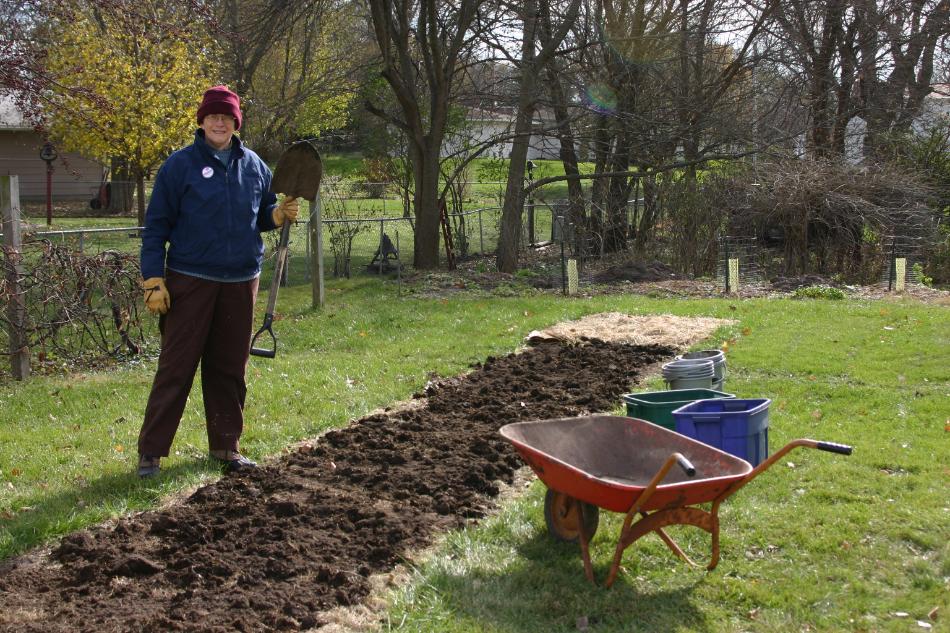
III. No-till methods of growing food:
- My first major project was to prepare a raspberry bed. I used what has been called the lasagna method with layers of manure, leaves, straw, and cardboard atop the turf. I did no roto-tilling nor digging. Earth critters worked underground during the winter, loosening the soil so that in the spring, I cut simply cut small holes in the cardboard and plant 24 raspberry plants. The leaves, straw, and cardboard would serve as mulch.
- There may be a book on lasagna gardening at the Ames Public Library. You can also Google the topic and find lots of sources. Perhaps start with the long article in Mother Earth News, then watch videos from other sources.
- Also, Practical Farmers of Iowa has produced a good video on no-till vegetable production. After watching this, I now leave most, if not all, of my vegetable roots in the ground after harvest. Those decaying roots are good for soil health.

IV. Developing diversity:
- Grow as wide of variety of tree, prairie, or vegetable plants as possible.
- Grow more than one variety of each plant. Example: we have four apple cultivars and, for the most part, more than one kind of seed for each of the kinds of vegetables we grow.
- Apple guilds are similar in principle to what many people refer to as the “Three Sisters Guild” of corn, squash, and beans are grown together.
- We do not mow near our apple trees. Instead, we have planted perennial plants around them.
- The apple trees, yarrow, rhubarb, and comfrey all benefit one another. Use male comfrey plants that will not sprawl like the female plants. I get my comfrey plants from Strictly Medicinal Seeds in Oregon.
- According to coldhardyfruits.com. “Companion plants are meant to provide multiple functions to benefit the apple tree and the other plants in the guild. Some companion plants are great at providing more than one function, so those are the plants we try to incorporate first. The main functions we look out for are:
Suppress grass and weeds.- Attract beneficial insects.
- Repel damaging insects.
- Provide biomass for mulch.
- Fertilize the soil.”
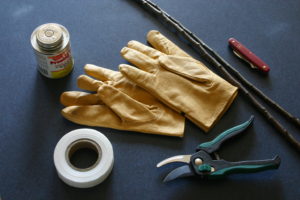
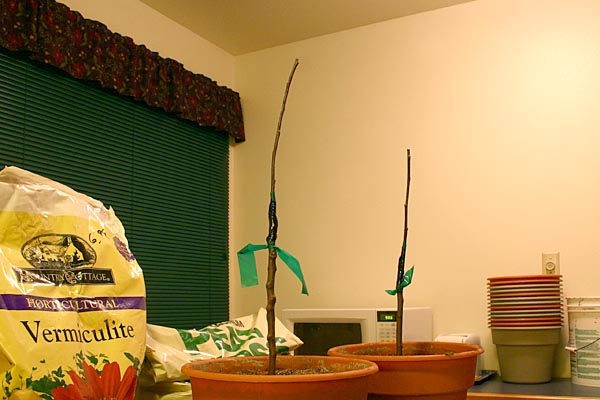
V. Grafting a new apple tree involves collecting a piece of wood from the previous year’s new growth from the tree you want to preserve. It’s called scionwood (the parent wood). Decide whether you want a dwarf, semi-dwarf, or standard size tree and obtain the appropriate apple rootstock from a nursery. I order from Raintree Nursery in Oregon, fit the scionwood and rootstock together in a tongue-in-groove manner, and bind the graft union with budding tape from A.M. Leonard. I keep the new tree in a healing area for a few weeks. Then when the tree begins to grow leaves, I put it in a pot of soil mix, water it with rain water, place the pot in a protected outdoor area (call it a nursery) over the summer, and plant the tree in the ground in mid-September. If interested in learning to graft apple trees, contact Iowa State University Extension or Seed Savers Exchange in Decorah to learn if either will be offering grafting workshops in your area.
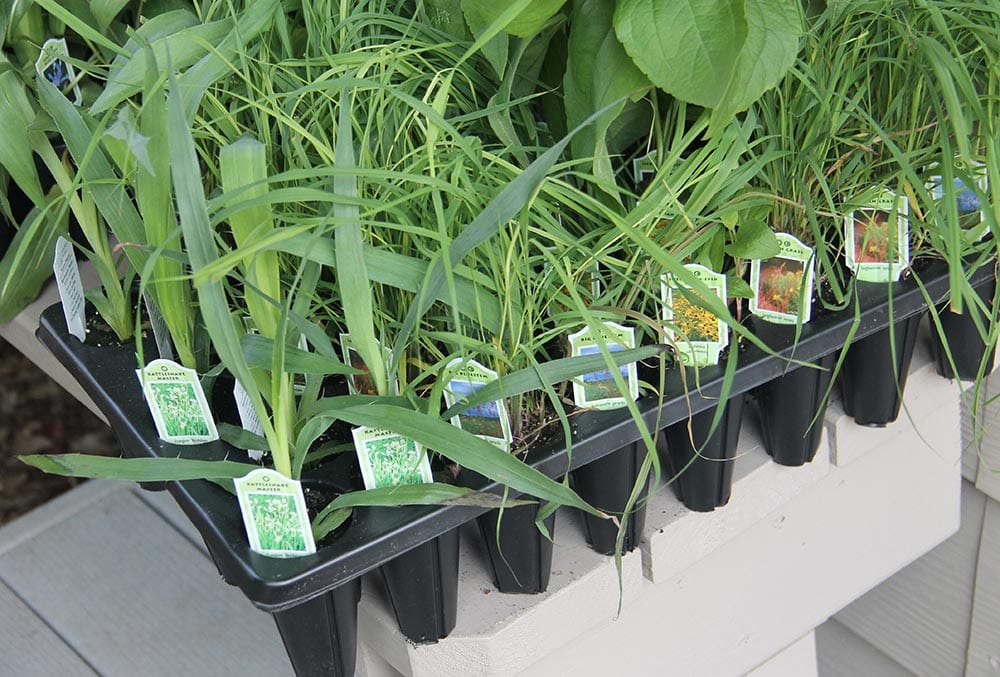
VI. Some sources of true prairie plant seed or seedlings:

VII. What we grow on this urban farm:
- Fruit and nuts: apricots, aronia berries, cherries, elderberries, gooseberries, hazelnuts, pawpaw fruit, peaches, plums, strawberries.
- Vegetables: beets, broccoli, butternut squash, cabbages, carrots, collards, dry beans, garlic, green beans, kale, onions, peppers, potatoes, tomatoes, zucchini squash, and other.
- Herbs: basil, cilantro, fennel, parsley, rosemary, thyme, and other.
- Edible native or other perennial plants for tea, flavor, or food: beebalm, dandelions, lambsquarters, lemon balm, lovage, mint, perilla, pigweed, purslane, and water hemp.
- Cats and laying hens.
- Sense of place and hospitality.
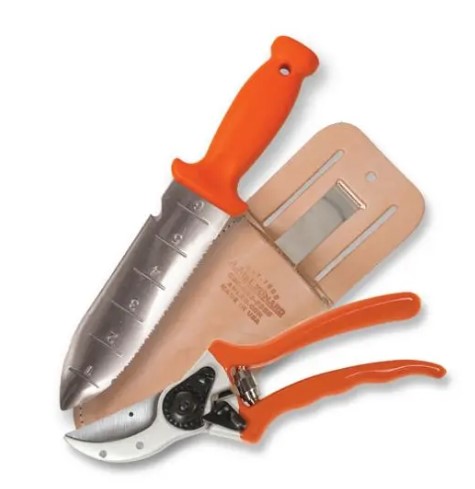
VIII. The other top tools and items we recommend:
- Compost bin or bins, chicken wire and garden stakes or fence posts, five-gallon buckets, rain barrels, watering cans, water hose, watering wand, garden wagons, and an assortment of shovels and rakes.
- A combo kit from A.M Leonard that includes a soil knife, pruner, and holster. (Currently out of stock).
- Germination soil mix for starting seeds.
- Liquid fish emulsion or seaweed or a combination of the two for use as fertilizer.
- A good hat and long-sleeve cotton shirts from your closets, a friend, family member, or thrift store.
- Use your Ace Hardware Rewards coupons toward leather work gloves at their store.

IX. Thoughts about the potential ripple effects from this and other urban farms:
- This farm has the potential to be a model, even if not one of perfection. My hope is that people passing by on the sidewalk or stopping to visit will be inspired to adapt and develop some of what they see for their own places.
- Each small step we take has the potential to be part of the solution. Part of the solution for creating a healthier environment and economy. Part of the solution for creating healthier food systems, neighborhoods, and communities.
X. Quote about land use from Robin Wall Kimmerer:
- Kimmerer is a mother, scientist, decorated professor, and enrolled member of the citizen Potawatomi Nation.
- Her book Braiding Sweetgrass about indigenous wisdom, science, and the land was published by Milkweed Editions in 2013.
What if we could fashion a restoration plan that grew
from understanding multiple meanings of land?
Land as sustainer. Land as identity.
Land as grocery store and pharmacy.
Land as connection to our ancestors.
Land as moral obligation.
Land as sacred. Land as self.


